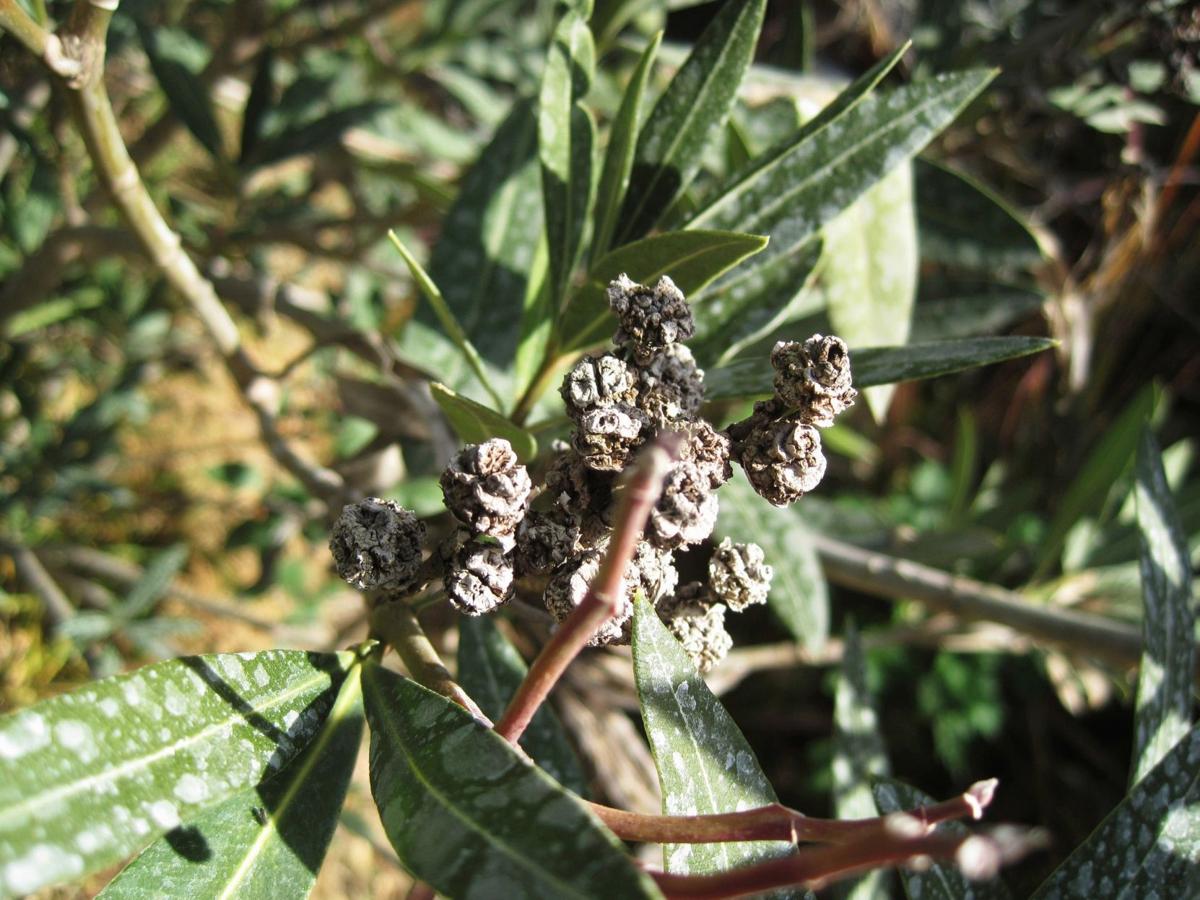Q: I have several mature oleander plants in my backyard. One of them has developed a growth on some pruned branch tips that resembles broccoli. Also, the leaves that have fallen from several of the plants are much smaller than they used to be. Not many blooms either, now that I think about it. I am concerned because they all seem like they are “thinning out.” Can you help me with this problem?
A: The growths you are seeing are the result of the bacteria Pseudomonas syringae inside the plant. The bacteria can enter the plant through wounds caused by pruning or other injury or through natural openings in the leaf, blossom and stem. Water can carry the bacteria from diseased plants to healthy ones in the splash from rain or sprinklers. The bacteria are also moved from infected plants to healthy ones by unsuspecting gardeners on their pruning tools. You can remove the galls by pruning several inches below each one. Treat each cut with a 10 percent bleach solution. Dip pruning tools in that bleach solution between each cut to reduce the possibility of spreading the bacteria. Make sure you dispose of the cuttings and do not compost diseased plant material. It’s best to prune during the dry seasons to avoid infection of wounds and avoid sprinkler irrigation while pruning wounds are fresh. Severe infections of large shrubs are often difficult to control by selective pruning. Even if you cut down the entire shrub, the new succulent growth will still be extremely susceptible to infection. In certain situations, removal of the diseased plant and replanting may be the best management method.
Peter L. Warren is the urban horticulture agent for the Pima County Cooperative Extension and the University of Arizona. Email questions to tucsongardensage@gmail.com





